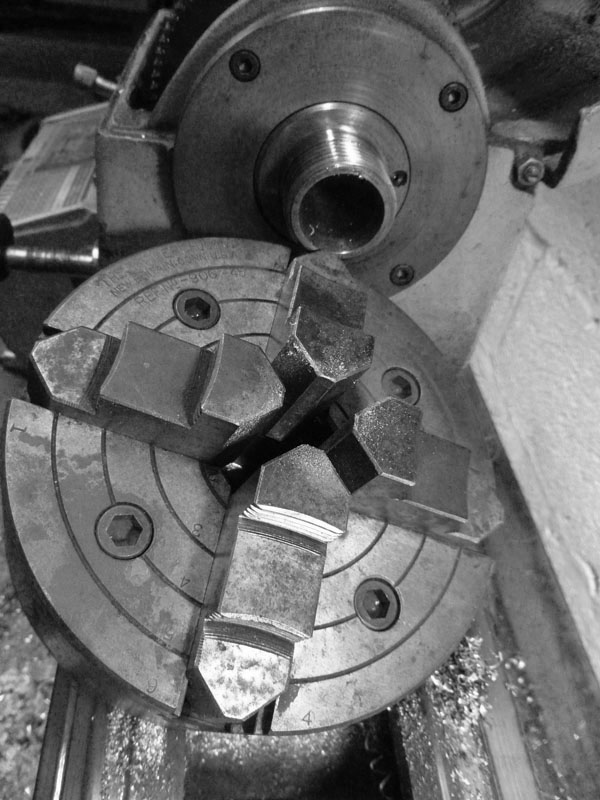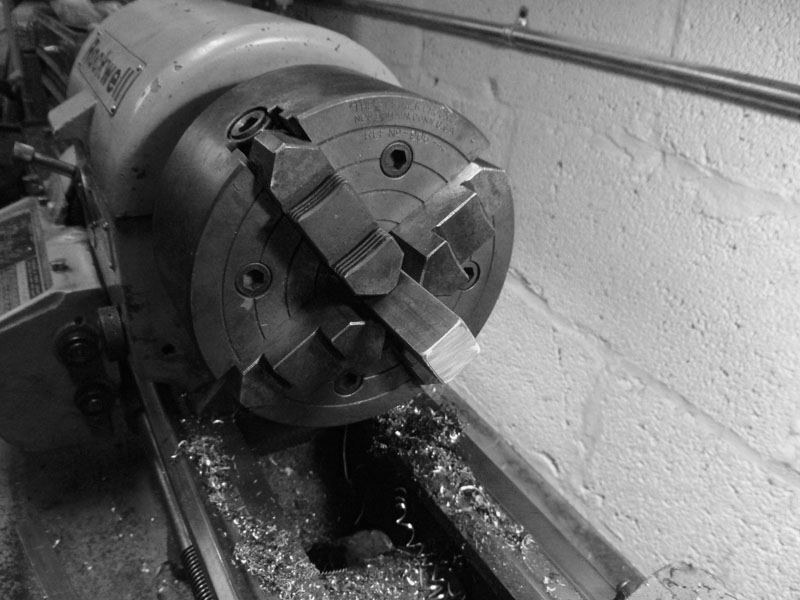Just when I was about to button up the ’64 panhead last week after rewiring and a bunch of other improvements I found the seat pivot boss to be stripped. Dammit. Decided to go to 3/8″ bolt from 5/16 as the tab is not really thick enough for a thread repair and tapping welded areas varies from troublesome to impossible. The original pivot pin is hardened and ground and made out of that incredibly tough metal that Harley used to employ as a matter of course. Carbide wouldn’t put a scratch in it. No way to bore out the original pin.
So I made one out of 660 bronze. Sorry once again, purists. Functional over stock every time, where the latter isn’t available and I’d like to actually ride somewhere.
So the only bronze stock I have is square. No way to hold it in the three-jaw chuck on the lathe. Guess I’ll break out the four-jaw. It’d been a while. Then I figured I take a couple snaps and show how to center a part in the four-jaw chuck. Here it is. . .
A three-jaw chuck is designed to close concentrically on any round or six-sided piece with a single adjuster screw. It is the type most commonly found on lathes and has a million uses. Sometimes though, you have do do offset or square work. The four-jaw chuck has four independently controlled jaws that must each be set when aligning a part as desired.

Here is a chuck I got pretty cheap and rebuilt it. It's been around the block a few times, but who hasn't?
The first step is loosely place your piece in the chuck and get it visually centered by whatever means you like. You can eyeball it, rotate it by hand slowly, use the guide lines on the chuck face or anything else you can come up with. Once the piece is where you like it, snug each jaw, but not too tight as you’ll be making further adjustments.
Continue reading

